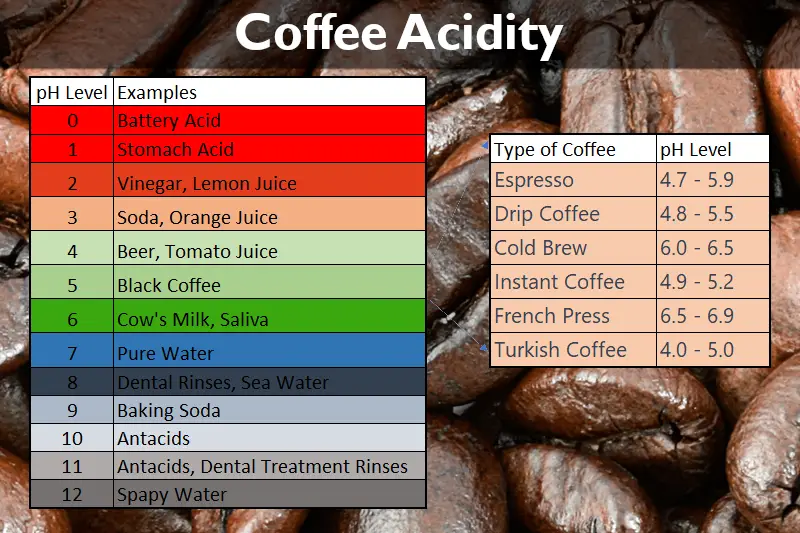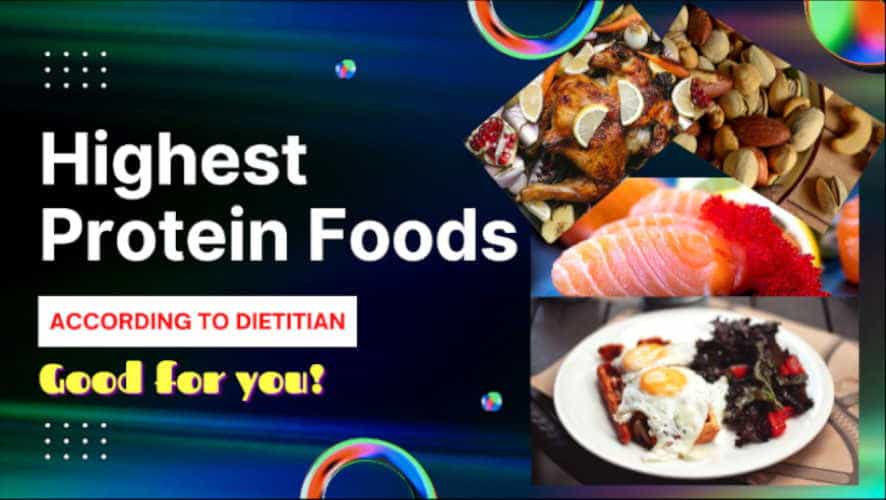High Casein Foods | The Top 5 Foods with Protein Casein
Most people are familiar with whey protein, which is derived from cow’s milk and is popular among bodybuilders and athletes. What you may not be as familiar with is casein protein, which makes up about 80 percent of the protein in cow’s milk. Casein is a slow-digesting protein, which means it can help you feel full for longer and may even help with weight loss.
There are a number of high casein foods that you can add to your diet to increase your protein intake. Dairy products such as milk, yogurt, and cheese are all good sources of casein protein.
It is good to know that there is no casein protein found in plant-based milk such as soy milk, almond milk, or rice milk.
The Benefits of High Casein Foods
If you’re looking to lose weight, casein protein can be a helpful addition to your diet. Because it takes longer to digest, casein can help you feel full for longer periods of time. This can prevent you from overeating and help you lose weight.
If you’re looking to build muscle, casein protein can also be a good choice. Because it’s a slow-digesting protein, casein can help prevent muscle breakdown and can even promote muscle growth.
So, if you’re looking to increase your protein intake, consider adding some high casein foods to your diet. Casein protein can help you lose weight, build muscle, and feel full for longer.
For starters, casein protein is slowly absorbed by the body, which makes it ideal for taking before bed or during extended periods without food. This slow absorption rate allows your muscles to be supplied with a steady stream of amino acids, which can help promote muscle growth and recovery.
What many people don’t know is those casein foods are also an excellent source of nutrition before bed. That’s right, casein foods before bed slowly digest and provide a steady stream of amino acids to your muscles throughout the night. Amino acids help to promote muscle growth and recovery.
List of High Casein Foods

Let us now look at the high casein foods. It is useful to those who are looking to increase the intake of casein in their diet. It is also useful to those who are looking for casein foods to avoid or who are casein intolerant.
Milk
We all know that milk is a good source of protein, but did you know that casein protein makes up around 80% of the protein found in a cup of milk?
It’s a phosphoprotein (casein) that makes up around 80% of the proteins in cow’s milk. The protein content of human milk is less than 50%.
If you’re looking to boost your protein intake, then adding a glass of milk to your daily diet is a great way to do it. Each glass contains around 8 grams of protein, so it’s a quick and easy way to up your intake.
Plus, it’s a delicious way to start your day!
Cheese
When it comes to cheese, casein is the main protein you’ll find. Because the main ingredient of cheese is milk. Cheese is made by coagulating casein, which is why it’s such an important protein food in the dairy industry.
So, how much casein is in cheese? It depends on the type of cheese. For example, cheddar cheese contains around 26 grams of casein per 100 grams. On the other hand, cottage cheese only contains around 5 grams of casein per 100 grams. This is because cottage cheese is a low-fat cheese and contains fewer milk solids.
If you’re looking for a high-protein cheese, then you’ll want to choose one that has a higher casein content. However, if you’re trying to avoid dairy or are looking for a low-fat option, then cottage cheese is a good choice.
Yogurt
A lot of different types of yogurt are out there. But one thing that all yogurts have in common is casein. Casein is a protein found in milk, and it makes up about 80% of the protein in yogurt.
So, what does that mean for you? Well, if you’re looking for a high-protein snack, yogurt is a great option. Greek yogurt is a high-protein food compared to regular yogurt. A single cup of yogurt can have anywhere from 10-20 grams of protein, depending on the type of yogurt. And since casein is a slow-digesting protein, it’s a great option for a post-workout snack.
But what if you’re trying to avoid dairy? Well, there are a few plant-based yogurts out there that are made with soy or almond milk. These yogurts still have casein, but the amount is usually lower than in dairy-based yogurts.
So, whether you’re looking for a high-protein snack or you’re trying to avoid dairy, there’s a yogurt out there for you. Just be sure to check the labels to see how much casein is in each cup.
Ice cream
A lot of different ingredients go into the mix of ice cream. But one key ingredient is casein protein. It is because the main portion of ice cream is milk. It’s also a key ingredient in many popular brands of ice cream.
While casein protein is found in many brands of ice cream, not all ice cream is created equal. Some brands use more casein protein than others, and some use less.
For example, a brand like Haagen-Dazs uses less than 1% casein protein in its ice cream, while a brand like Halo Top uses about 10% casein protein.
The bottom line is that if you’re looking for a high-protein, low-calorie ice cream option, casein protein is a great choice. Just be sure to check the label to see how much casein protein is in each serving.
Casein Protein Powder
When it comes to protein powders, casein protein is often overlooked in favor of its more popular counterpart, whey protein. However, casein protein has its own unique benefits that make it worth considering for your fitness regimen.
It is because the slow absorption rate of casein allows your muscles to be supplied with a steady stream of amino acids. This can help promote muscle growth and recovery.
So if you’re looking for a protein powder that can help you build muscle and recover from your workouts, casein protein is definitely worth considering. Just be sure to check the label to make sure you’re getting a high-quality product with a good amino acid profile.
Less Obvious Sources of Casein Foods
When you think of casein protein, you probably think of dairy products like milk, cheese, and yogurt. But there are actually a lot of other foods that contain casein protein, even some that you might not expect.
What you may not realize is that casein is also found in a variety of processed foods.
Non-dairy foods with casein are often used as a food additive. It has a number of properties that can be beneficial to food manufacturers. Casein has the ability to improve texture, enhance flavor, and extend shelf life.
Here are some examples:
- Margarine
- Tuna
- Dairy-free cheese
- Non-dairy coffee creamer
- Semisweet chocolate
- Cereal bars
- Cheese-flavored chips
- Snack crackers
- Processed meats
- Bread and Pasta
- Soups
- Breakfast cereals
While the presence of casein in processed foods may not be something that you’re aware of, it’s important to note that it can be hidden under a variety of names. For example, it may be listed on ingredient labels as “milk solids,” “milk protein,” or “whey protein.” So, if you’re avoiding casein for any reason, it’s important to be on the lookout for these ingredients.
As you can see, there are a lot of foods that contain casein protein. If you’re trying to avoid casein, you need to be careful about what you eat. But don’t worry, there are plenty of casein-free foods out there. Just do your research and be mindful of what you’re eating.
Best High Casein Foods for Athletes and Bodybuilders
- Milk, cheese, and yogurt are great sources of casein protein. They can help athletes recover from workouts and build muscle.
- Yet, athletes and bodybuilders may also have to include other protein sources in their diet as well. Such as eggs, meat, and plant-based proteins. The combination of all types of high-protein foods helps to achieve their bodily goals.
High Casein Foods for People Who Want to Lose Weight
There are plenty of high casein protein foods to choose from, so you shouldn’t have any trouble incorporating them into your diet. Some good options include cottage cheese, Greek yogurt, and skim milk.
If you’re looking for something a little more substantial, you can also find casein protein powders that can be mixed into smoothies or used in baking recipes.
No matter how you choose to get your casein protein, it’s a great way to help you lose weight and reach your fitness goals. So don’t hesitate to give it a try!
Takeaway
Casein foods are primarily derived from dairy products such as milk, cheese, and yogurt. Casein is a protein that accounts for 80% total protein in cow milk.
High casein foods are useful for athletes and bodybuilders to maintain and build muscles. Similarly, high-protein foods are also useful for those who want to lose weight.
Casein traces may be found in many other foods, especially in processed foods. The reason behind this is to improve texture, enhance flavor, and extend the shelf life of such foods.
Source:
Noble Home Remedies adheres to rigorous sourcing standards, drawing information from peer-reviewed studies, reputable academic research institutions, and esteemed medical journals and associations. We prioritize using high-quality, trustworthy sources to maintain the accuracy and integrity of our content. You can learn more about how we ensure our content is accurate and current by reading our editorial policy.
- Health-Related Aspects of Milk Proteins by National Library of Medicine
- Where Is Casein Protein Found Naturally? by Peace Health
- The Effect of Casein Protein Prior to Sleep on Fat Metabolism in Obese Men by National Library of Medicine
- What Is the Best Type of Protein for Weight Loss? by Healthline
Trust in your purchase:
Every product featured on our site has been carefully researched and selected based on quality, customer ratings, and positive reviews to ensure you receive excellent value for your money.
Please note:
This post contains affiliate links. If you make a purchase through these links, we may earn a small commission at no additional cost to you. This helps support our site and allows us to continue bringing you valuable content. Thank you!
Thank you for your precious time spent with NobleHomeRemedies.
You may also like:
Is Coffee an Acid or a Base?
Is Coffee an Acid or a Base?: Does Morning Coffee Hurt You? Have you ever…
Kids Nutrition – Healthy Diet Guidelines
Kids Nutrition – Healthy Diet Guidelines Dear mothers, knowing your Kid’s Nutrition intake levels with…
High Protein Foods According to Dietitian
Top 10 High Protein Foods According to Dietitian Every adult should consume protein in order…
Fordyce Spots vs Pimples
Fordyce Spots vs Pimples: 5 Disturbing Misconceptions Have you ever noticed small, white bumps on…
Epsom Salt for Sunburn
Epsom Salt for Sunburn Relief: 2 Soothing Natural Solutions Sunburns are no fun! We’ve all…
How Long Does Strep Throat Last?
Strep Throat Got You Down: How long does strep throat last Strep throat, a common…






